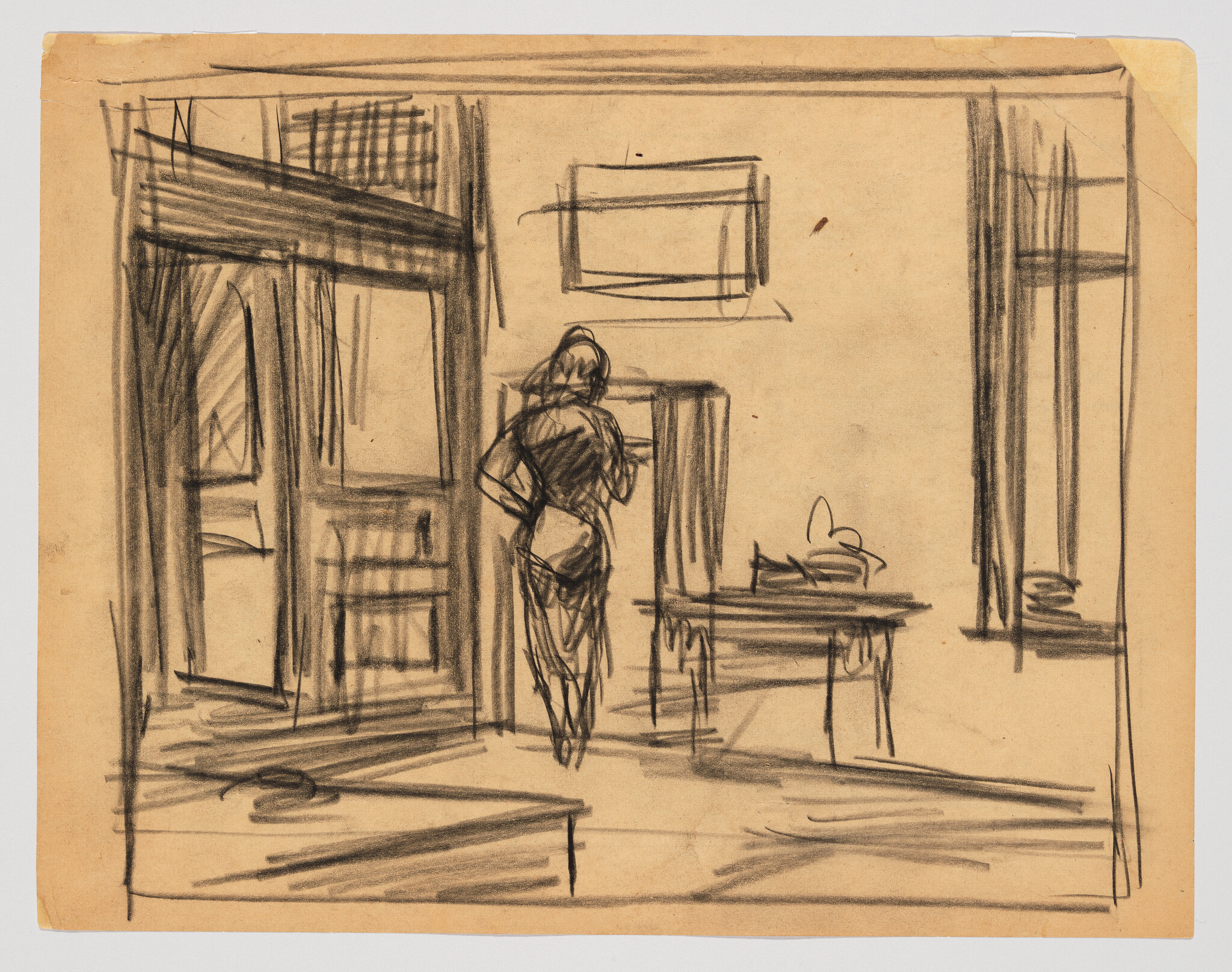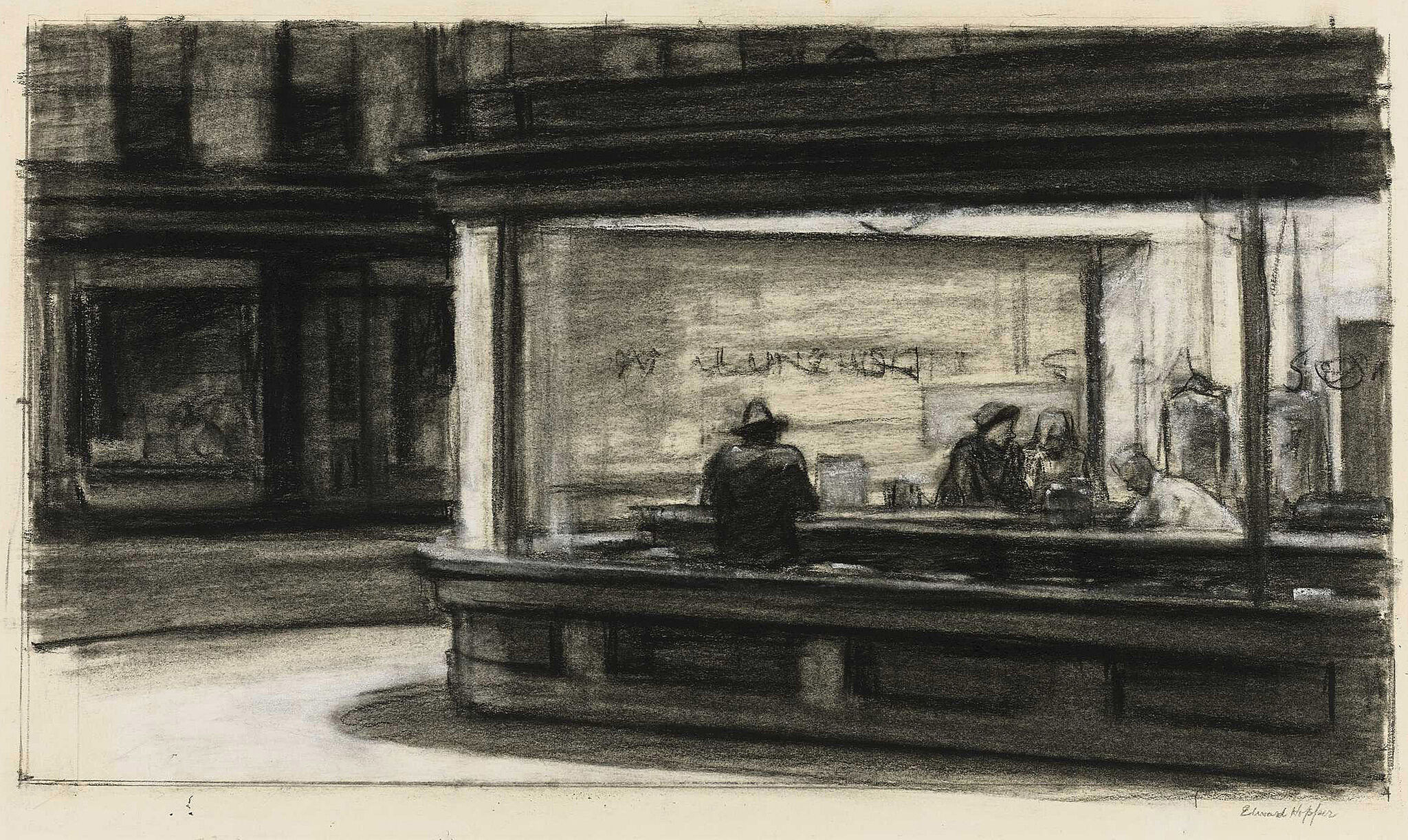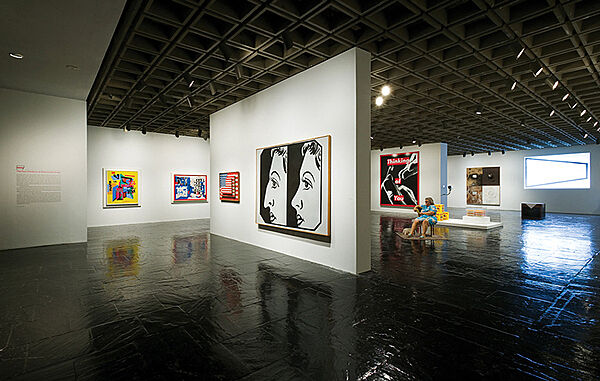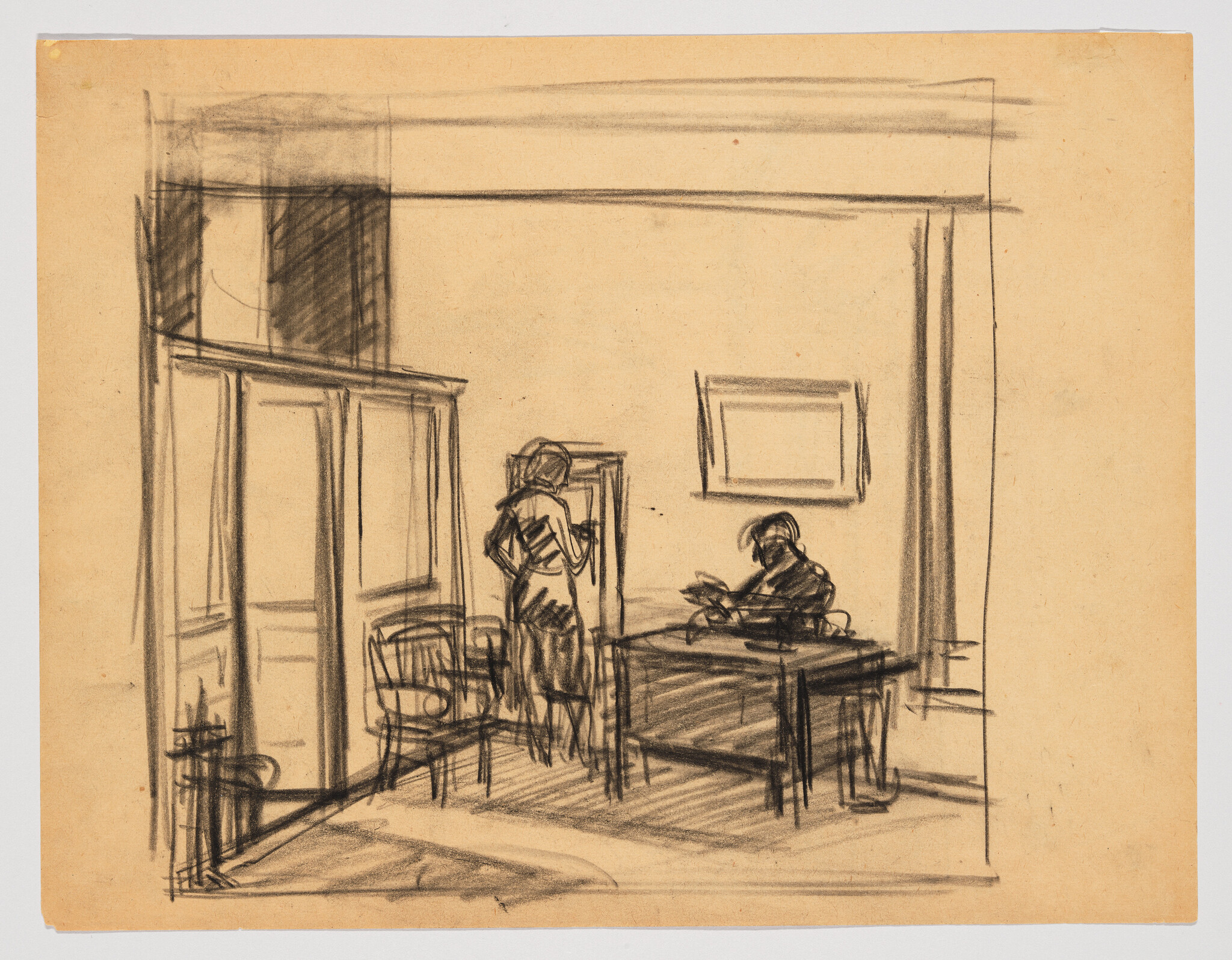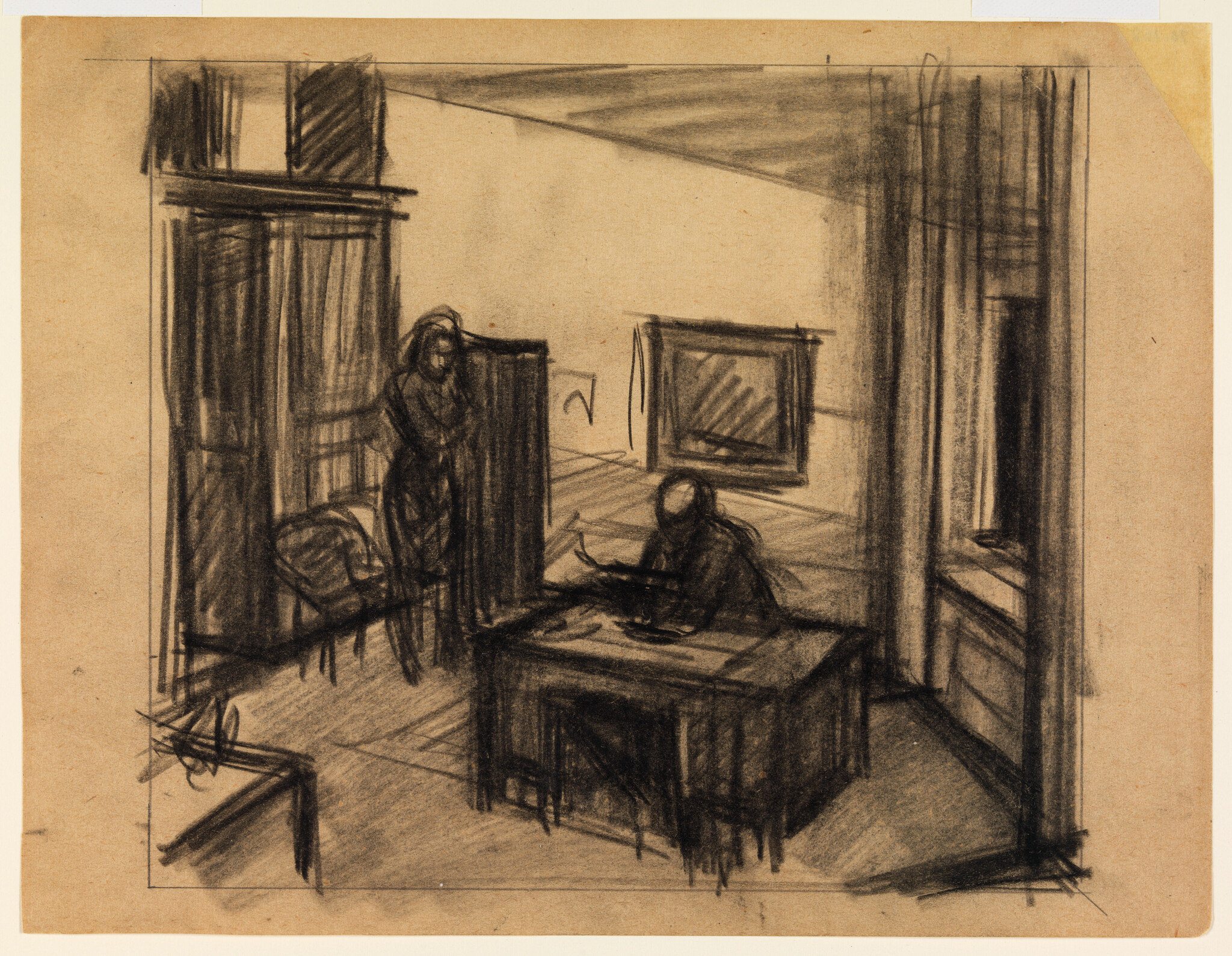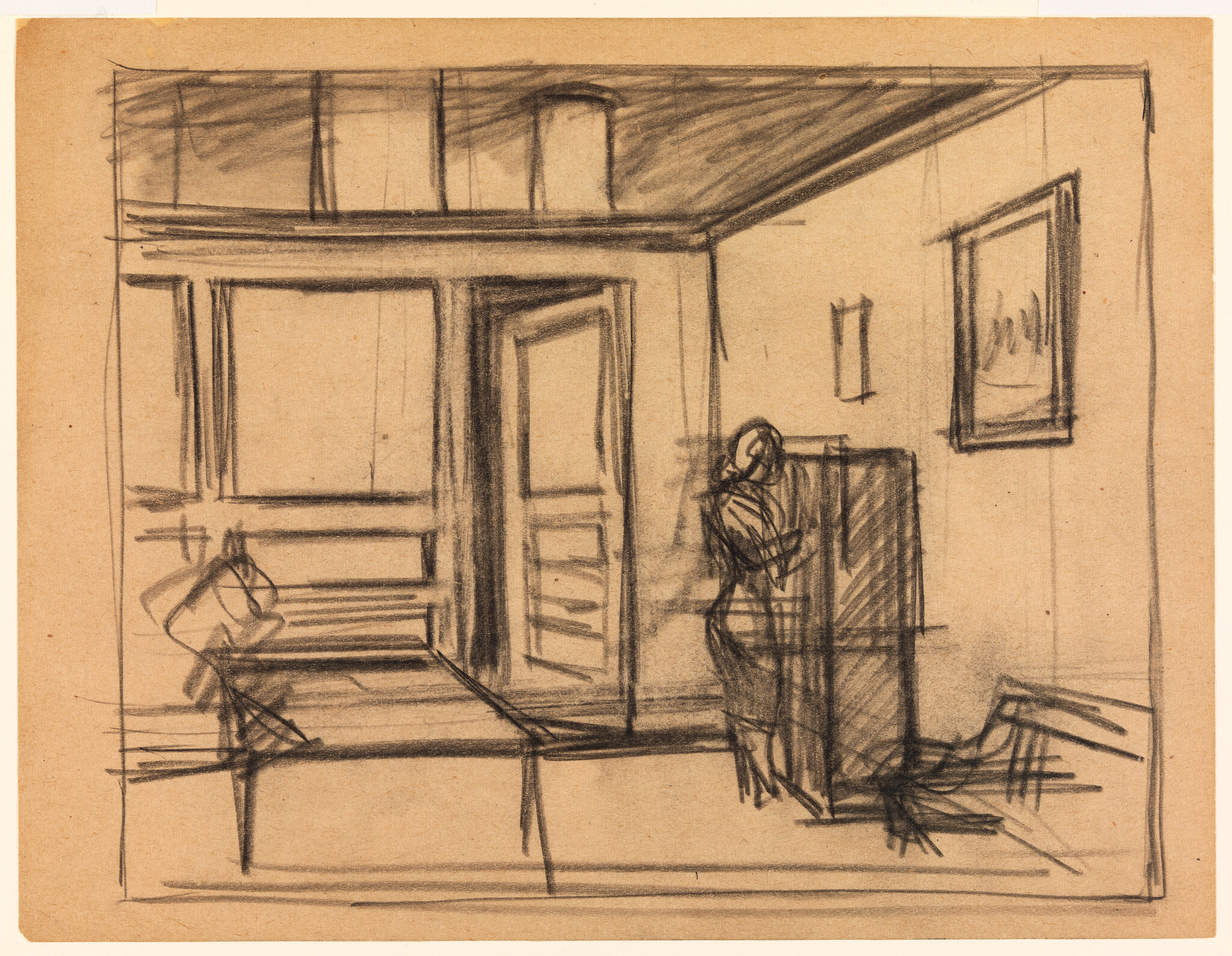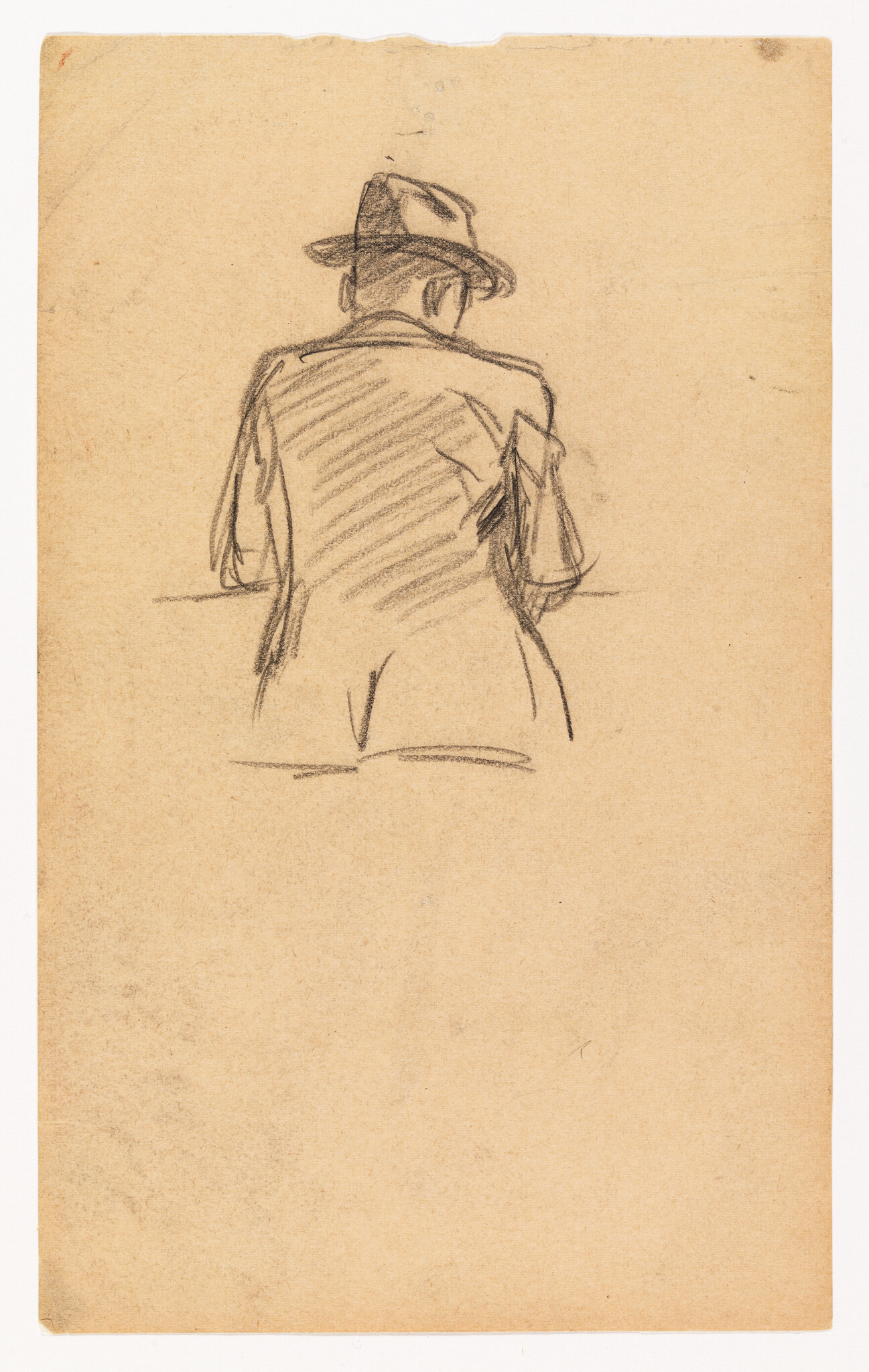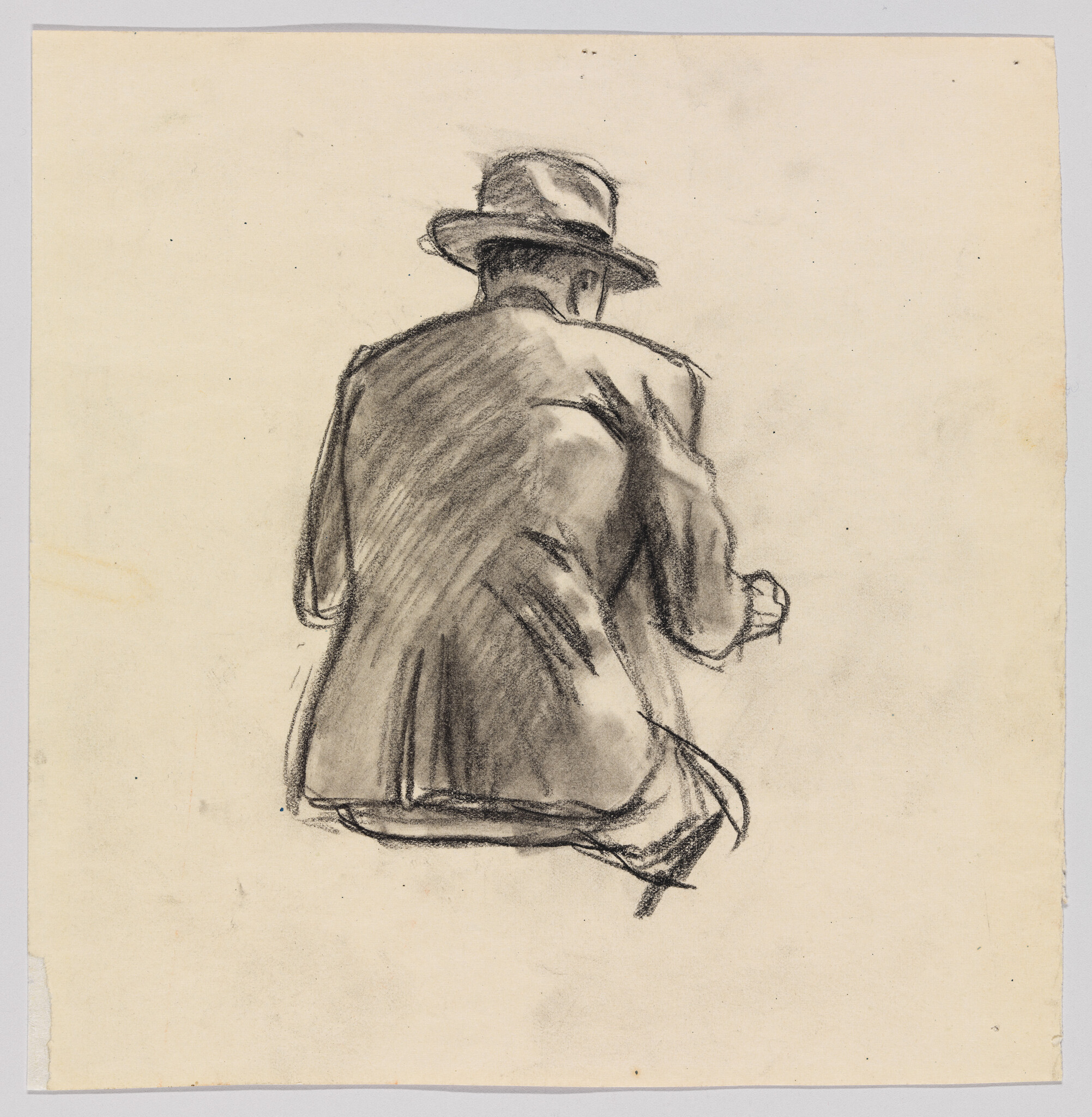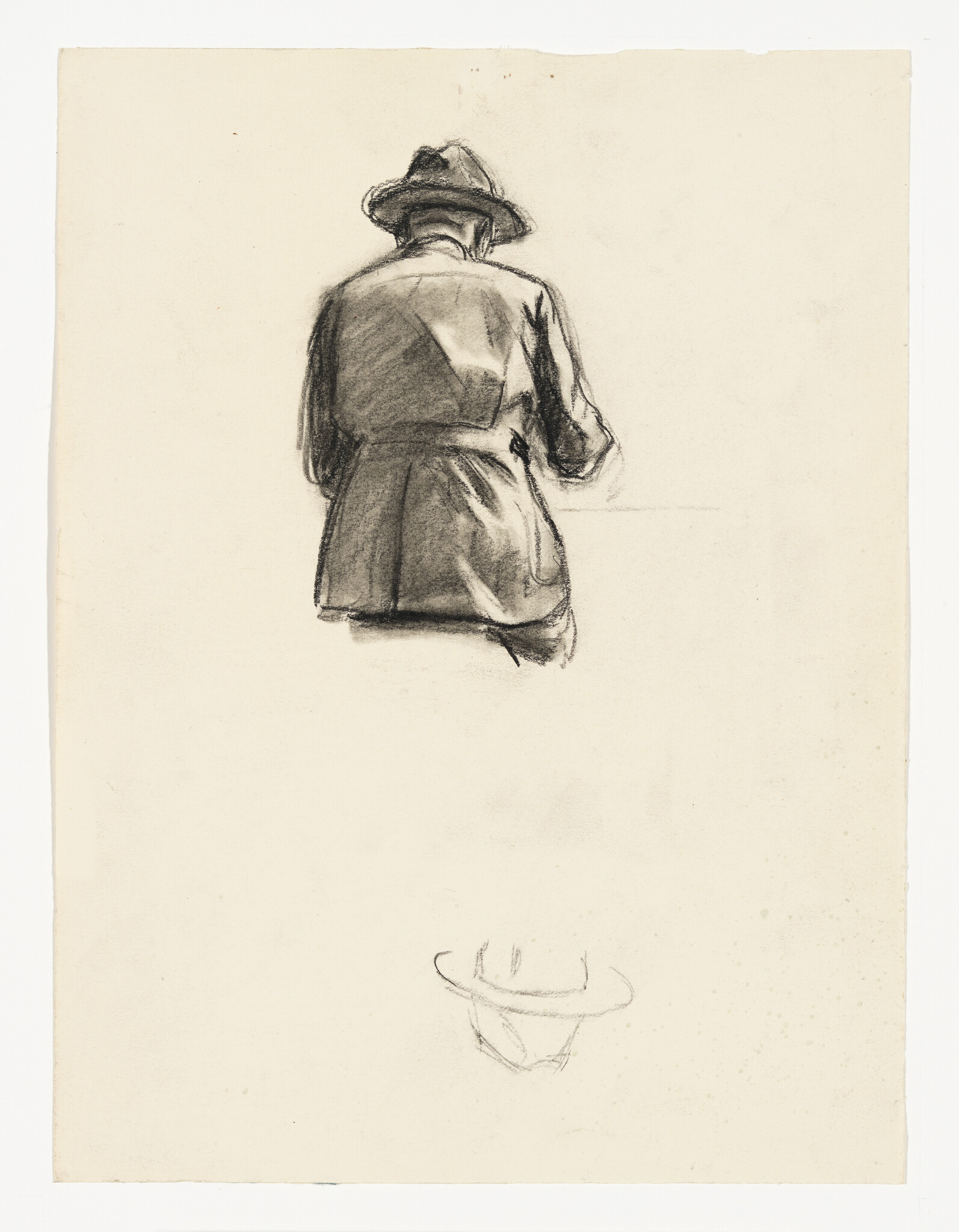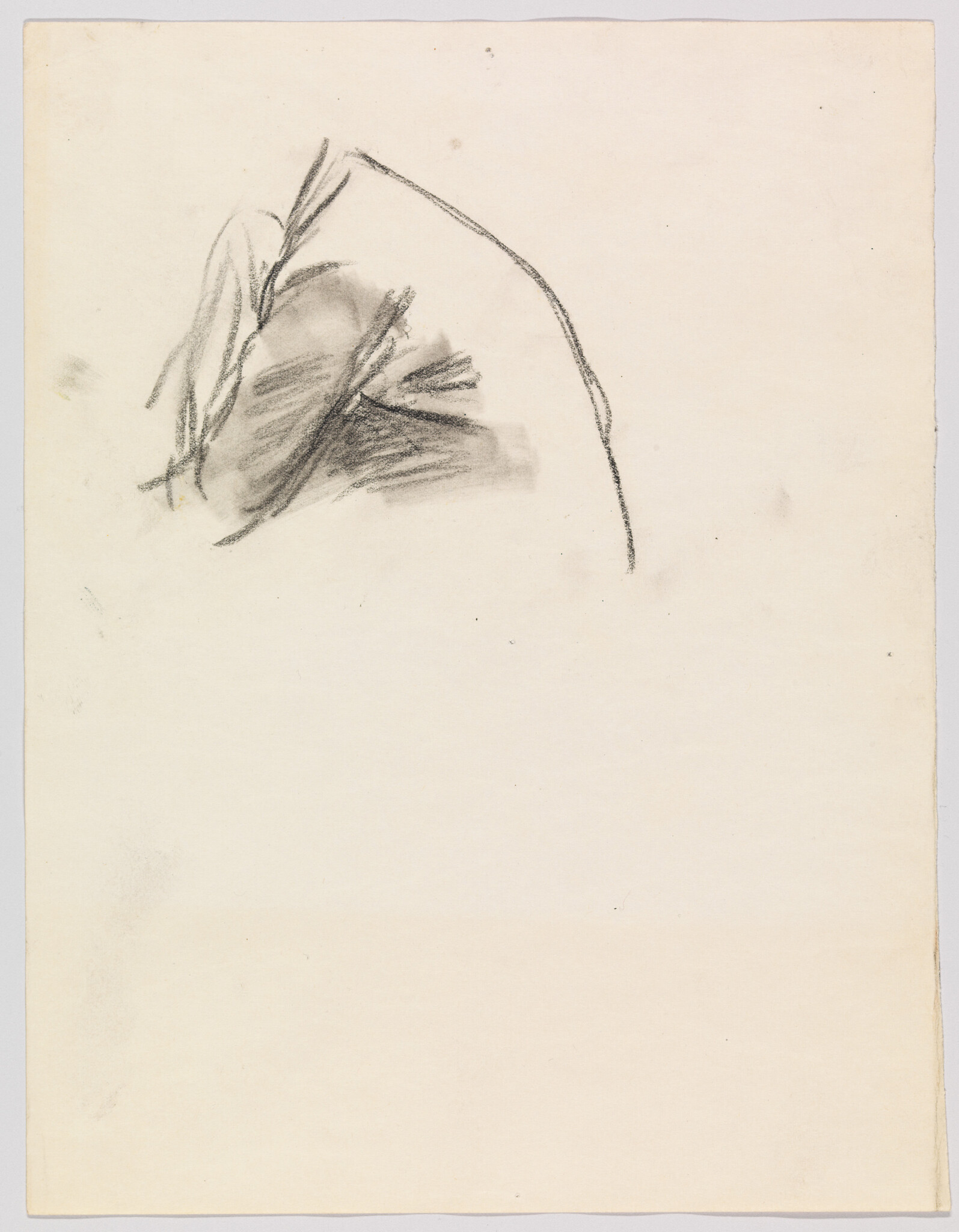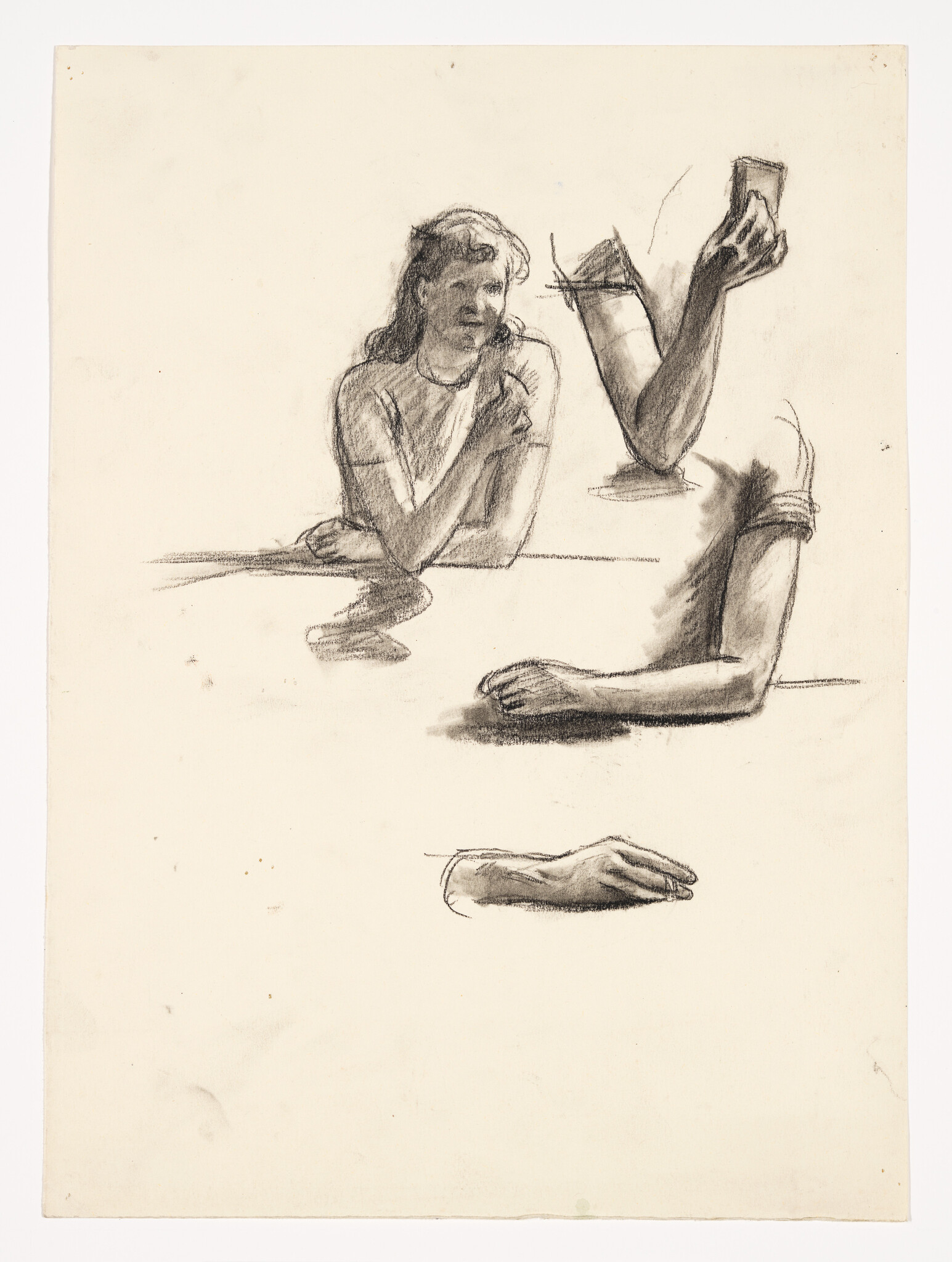Narrator: In one part of this section, we have five studies for Office at Night, and the painting itself. The drawings include three earlier compositional sketches as well as two more finished studies.
Carter Foster: They're really among his greatest drawings. And they have a degree of finish that's unusual in his work. They show him developing this very strange, hovering point of view that's such a key part of the painting.
Narrator: In the earliest of the drawings, on the smaller pieces of paper, we see the figures more or less head on—as if we occupied the same space that they do. In the final two drawings, executed more subtly on larger paper, we seem to look at the figures as though through a camera that has pulled back and up. The scene seems to play out as if on a movie screen. By the final two drawings, Hopper is treating the space expressively rather than realistically.
Carter Foster: In the drawings for Office at Night you see Hopper going from a fairly rational perspective where you have the walls, and the floors, and the ceilings all fitting together in a normal way, to him pulling back and creating the irrational space that you end up getting in the painting with a turned up, tilted up floor, and a hovering perspective that isn't rational at all. And the walls, in fact, don't meet at right angles. They're splayed out and opened up. You can see that, step by step, in the drawings. And when you get to the two very finished drawings, which are among the most materially worked drawings in Hopper's entire career, where he's using these incredibly subtle combinations of white and black chalk to explore the light effects, but he's also looking at ways to make the space tilted up and unusual.
Hopper clearly was thinking about creating this sense of spatial anxiety that you get in the painting in between these two drawings.

